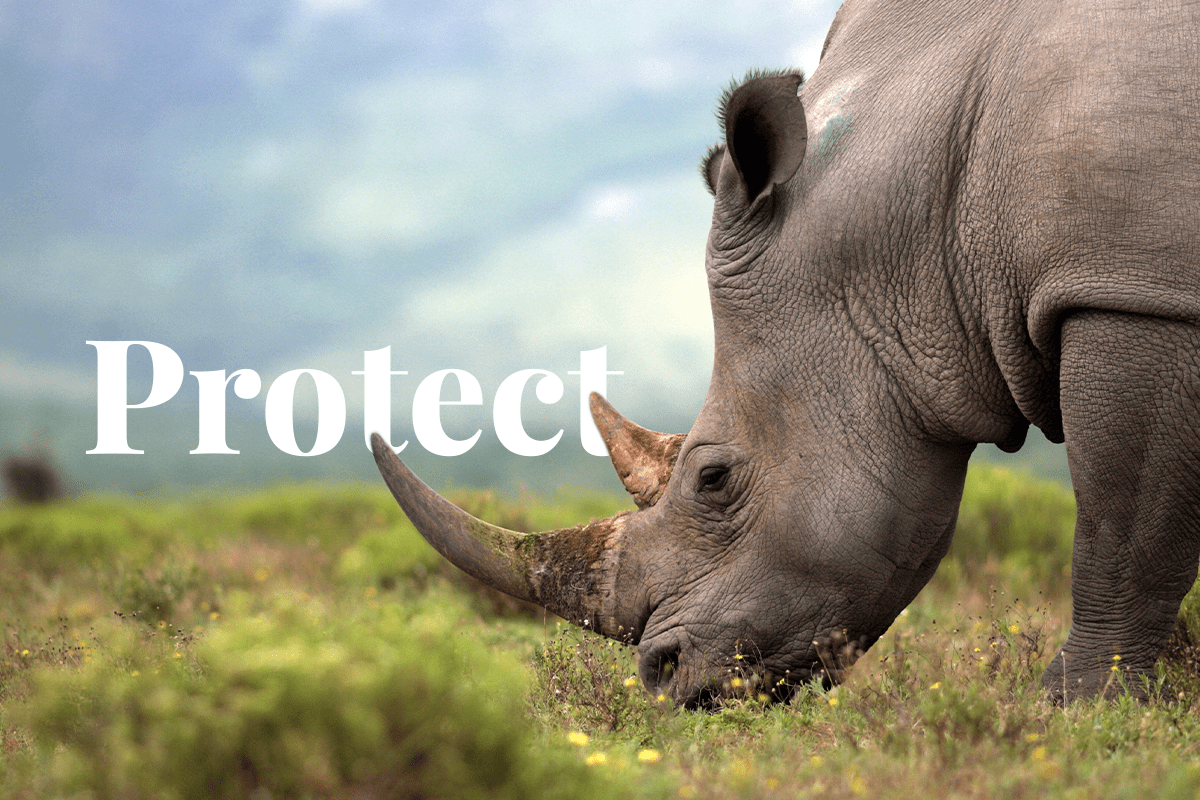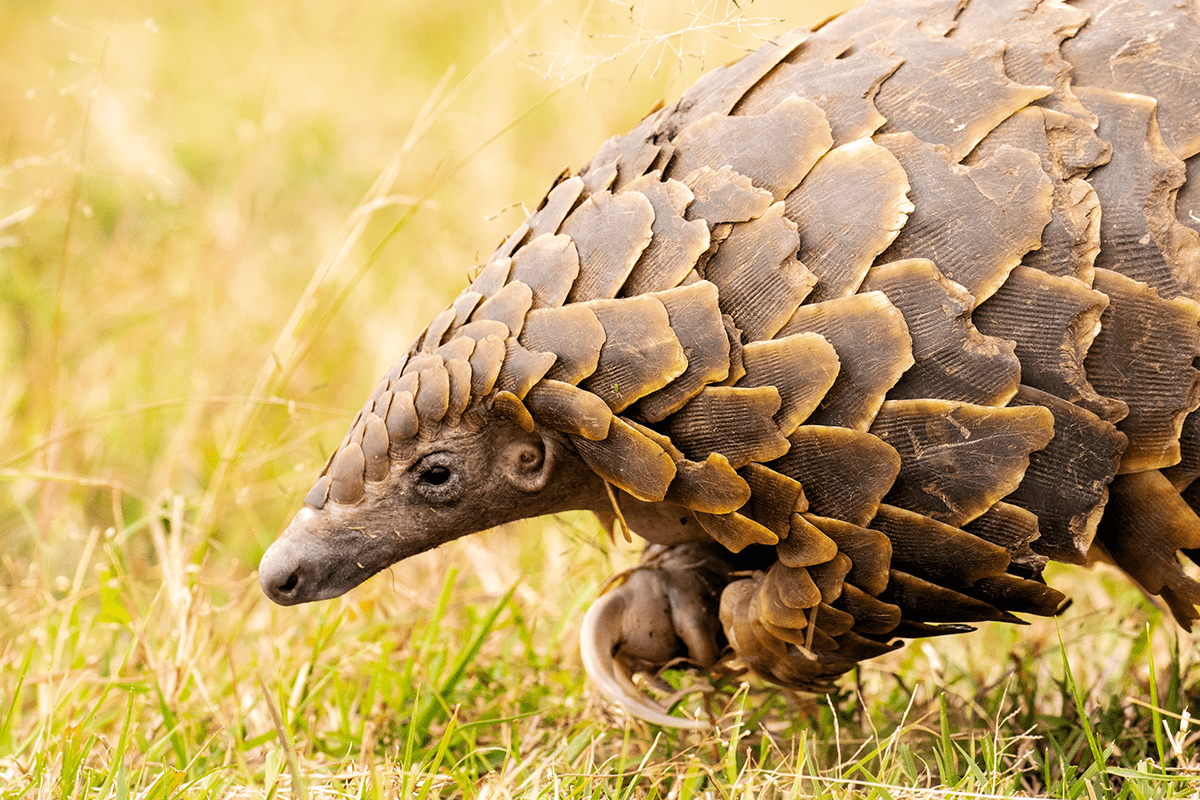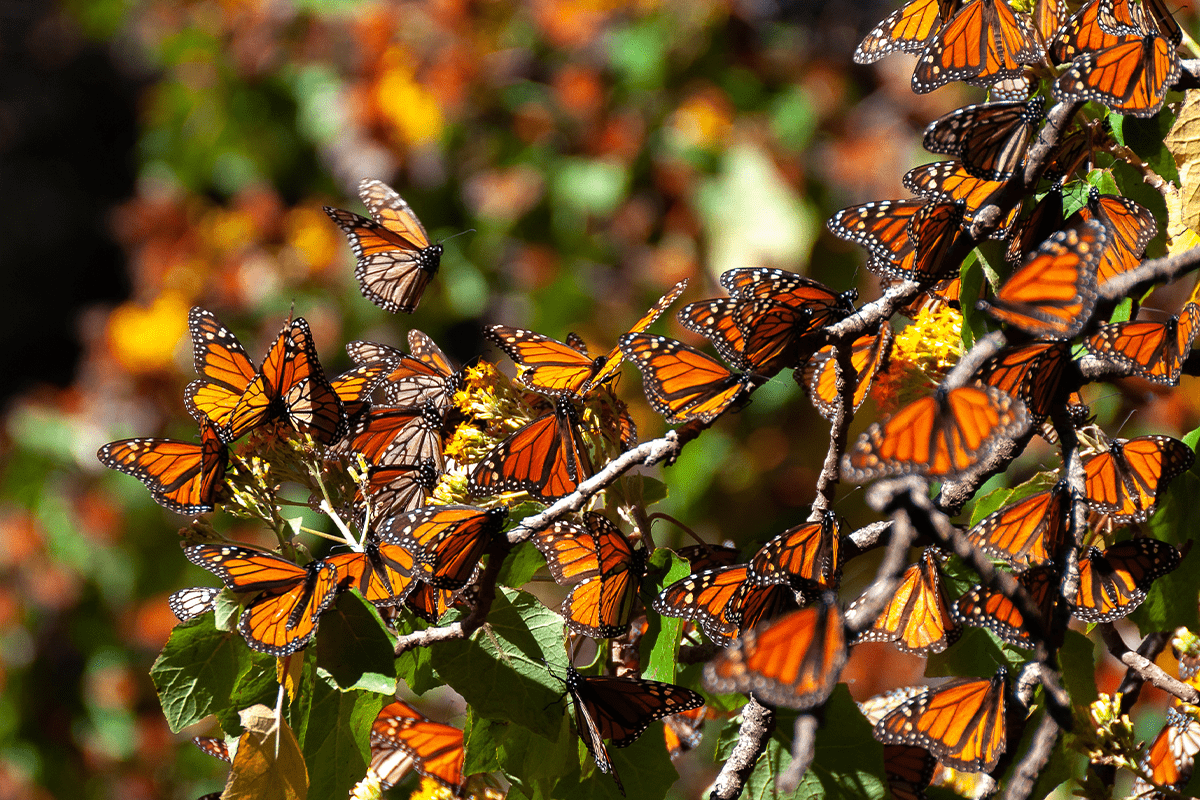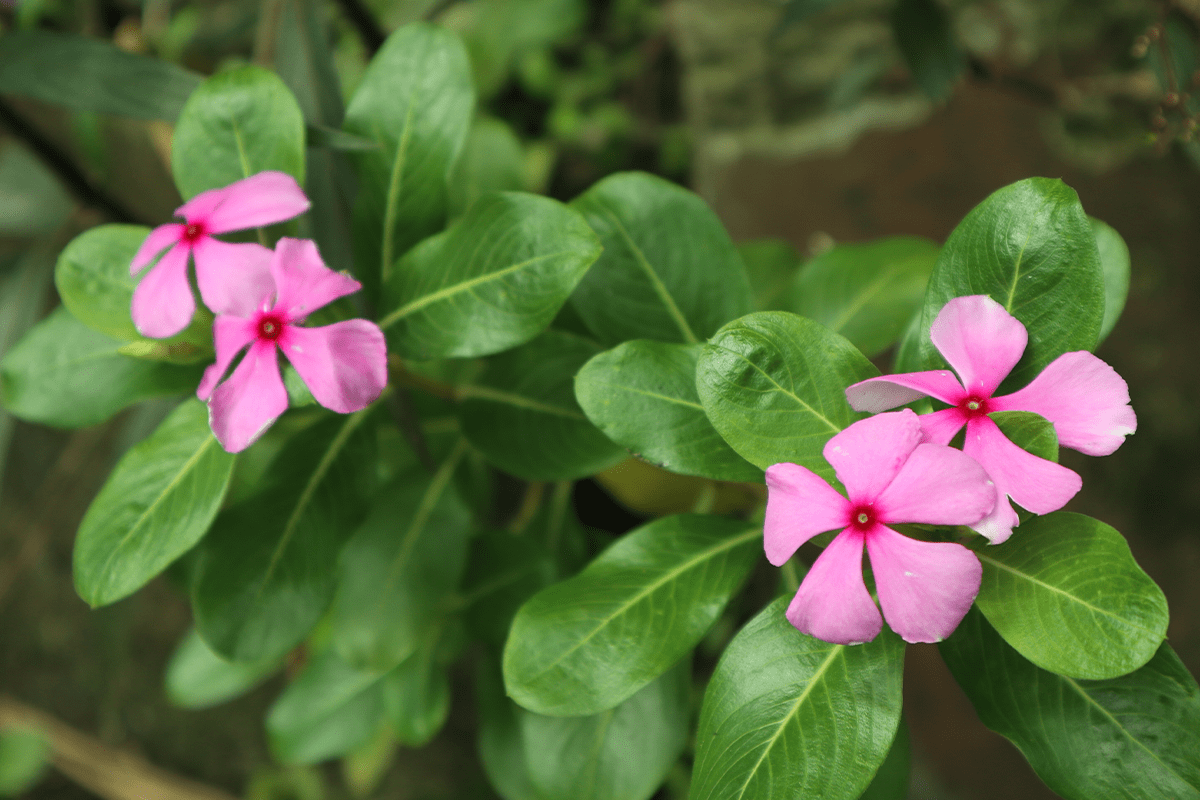Protecting endangered species is crucial for the preservation of biodiversity and the maintenance of healthy ecosystems. These species play essential roles in maintaining the balance of their ecosystems and provide valuable resources for human populations. However, human activities such as habitat destruction, over-exploitation, and pollution have led to the decline of many species.
 White rhino, South Africa.
White rhino, South Africa.
How are species being threatened?
According to the United Nations (UN), up to one million species are threatened with extinction. The International Union for Conservation of Nature (IUCN) has over 40,000 species classified as threatened in its 2022 Red List and estimates over 26,000 species are threatened with extinction. It also lists over 9,000 species as critically endangered before they are extinct in the wild. According to the World Wildlife Fund (WWF), humans are responsible for 99% of endangered species. As a result, the WWF believes the current extinction rate is 1,000 to 10,000 times higher than the natural rate.
Read more: From the brink of extinction: four endangered species that made a comeback
Human activities have led to the decline of many endangered species. Habitat destruction is one of the leading causes of species’ decline. As human populations continue to grow and urbanise, natural habitats are being destroyed and fragmented. This results in the loss of food, shelter, and breeding sites for many species.
Over-exploitation is another major cause of species’ decline. According to data from the UN Office on Drugs and Crime (UNODC) and from the Convention on International Trade in Endangered Species of Wild Fauna and Flora (CITES), illegal wildlife trade is estimated between $7 billion and $23 billion per year, making wildlife crime one of the most lucrative illegal businesses, second only to drug trafficking in terms of profitability for organised criminal groups. In terms of the scale of the problem, data from the WWF estimates that at least 7,000 elephants are poached for their ivory each year and that rhino populations have declined by 90% over the past century due to poaching for their horns. In addition, many species are hunted or harvested for food, medicine, or other resources. For example, the Chinese pangolin is considered the most heavily trafficked mammal in the world, with all eight species being illegally hunted and traded for their meat and scales.
Invest in our nature-restoration projects and protect endangered species
 Male pangolin walking along the tall grass.
Male pangolin walking along the tall grass.
Changing environments are also a significant threat to many species. As temperatures rise and weather patterns change, species are unable to adapt to their new environment. The risk of species’ extinction increases with every degree of warming: with a 3°C increase in temperature, 41% of mammals would be at risk of losing their habitat. Rising temperatures in the ocean increase the risk of irreversible loss of marine and coastal ecosystems.
Pollution is another major threat to many species. Contaminants such as pesticides, heavy metals, and plastic debris can harm or kill many species. For example, plastic debris in the ocean can harm or kill marine life, such as sea turtles, dolphins, and whales.
Offset the impact of your plastic use
Why endangered species should be protected
One of the main reasons for protecting endangered species is their role in maintaining biodiversity, our planet's most important and complex feature. It comprises the variety of life at all its levels and interactions from gene to ecosystem. Biodiversity encompasses the cultural, ecological and evolutionary processes that endure life. It includes not only endangered species but all living organisms in existence, from microbes to mammals and all types of ecosystems, from rainforests, deserts, mountains, and coral reefs. All are part of a diverse ecosystem.
Endangered species are often indicator species, meaning their decline can indicate the deterioration of an ecosystem as a whole. For example, the critical condition of the monarch butterfly, a pollinator species living in the United States and Mexico, can indicate a decline in the health of the entire prairie ecosystem.
 Monarch Butterflies, Mexico.
Monarch Butterflies, Mexico.
Biodiversity loss can have far-reaching consequences for both the environment and human populations. As such, endangered species also provide valuable resources for human populations. Many species are used for food, medicine, and other resources. For example, the rosy periwinkle, an endangered plant species, is a source of two anti-cancer compounds. The loss of these species can result in the loss of potential cures for diseases and other valuable resources. According to the UN Environment Programme, over half of global GDP depends on nature.
Read more: Ugly species need biodiversity protection too
 Rosy periwinkle.
Rosy periwinkle.
More than one billion people rely on forests for their livelihoods. In addition, endangered species are often cultural or spiritual symbols for many communities. For example, the bald eagle symbolises freedom and strength for the United States, and the tiger is power and strength for many Asian cultures. The loss of these species can result in the loss of important cultural and spiritual values.
Read more: The impact of reforestation on biodiversity
How can endangered species be protected?
Protecting endangered species is a complex issue that requires a multifaceted approach. Many strategies can be used to protect endangered species, ranging from habitat restoration to conservation education. Here are a few ways that endangered species can be protected:
- Habitat restoration
Habitat restoration involves restoring degraded ecosystems to their natural state. This includes restoring forests, wetlands, and other ecosystems that have been destroyed by human activities. Habitat restoration can help endangered species by providing them with the food, shelter, and breeding sites they need to survive. DGB Group's projects restore nature at scale by restoring and protecting vital habitats. Our Bulindi Chimpanzee Habitat Restoration Project, for instance, aims to rapidly restore the declining chimpanzee habitat of over 300 wild chimpanzees in Bulindi, Uganda, through active afforestation and community involvement.
- Conservation education
Conservation education is an important tool for protecting endangered species. It involves educating people about the importance of biodiversity and the threats facing endangered species. Conservation education can help raise awareness about the need to protect endangered species and can help people understand how their actions impact the environment.
- Wildlife conservation laws
Laws and regulations are crucial in protecting endangered species. Many countries have laws that protect endangered species and their habitats. For example, the Endangered Species Act in the United States protects species listed as endangered or threatened and prohibits harming or killing them.
- Protected areas
Protected areas are designated areas managed for conservation purposes. They include national parks, wildlife refuges, and other areas protected from human activities. Protected areas provide a safe haven for endangered species and their habitats.
- Sustainable development
Sustainable development involves using resources to meet the needs of the present without compromising the ability of future generations to meet their own needs. Sustainable development, including reducing carbon emissions, can help protect endangered species by reducing the impact of human activities on the environment. DGB's verified carbon credits can help you reduce your environmental impact and reach net zero in addition to restoring nature and supporting local community development. When you invest in our carbon credits, you therefore invest in nature restoration and endangered species' conservation.
Invest in nature and make a positive impact
In addition to these strategies, it is also important to address the root causes of biodiversity loss. This includes addressing issues such as changing environmental conditions, pollution, and over-exploitation of natural resources. By addressing these underlying issues, we can help protect not only endangered species but also the ecosystems that support all life on Earth.
Read more: 7 Strategies for protecting wildlife
The importance of protecting endangered species
Protecting endangered species is crucial for maintaining the balance of our planet's ecosystems, preserving biodiversity, and ensuring the sustainability of human populations. The threats to endangered species are numerous and often driven by human activities, such as habitat destruction, over-exploitation, and pollution. However, there are many ways that we can work towards protecting these species, such as supporting conservation efforts, reducing our carbon footprint, and advocating for stronger policies and regulations to address wildlife trade and habitat destruction. By taking action to protect endangered species, we can ensure that our planet remains a diverse and thriving home for all species, including humans.
Find out how DGB’s reforestation project in Uganda protects the Bulindi chimpanzees
At DGB Group, we believe that investment in nature-based solutions is the optimal path to protect and restore nature. Therefore, we design and manage large-scale reforestation, afforestation, and community-based agroforestry projects that restore biodiversity and degraded land, help communities with sustainable development, and protect endangered species by restoring their natural habitats. If you want to contribute to restoring nature, you can invest in our verified carbon credits that not only help you reduce your environmental impact but also power our projects that restore nature at scale.







